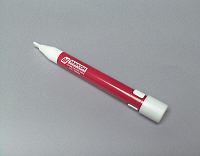 The two most frequent questions I hear while on an appliance service call are 1) “How much is a new one?” and 2) “How long should appliances last?” I’ve already discussed the first question in the linked article and this pearl of appliance wisdom will answer the second one.
The two most frequent questions I hear while on an appliance service call are 1) “How much is a new one?” and 2) “How long should appliances last?” I’ve already discussed the first question in the linked article and this pearl of appliance wisdom will answer the second one.
The notion that an appliance has a definite life-span after which it should be hauled off to the landfill is one that the savvy marketing departments of the appliance manufacturers have carefully implanted into that muck between our ears. One of the ways they do this is by talking about appliance life expectancy. Appliance manufacturers would have you believe that you should replace an appliance after a pre-determined number of years, regardless of brand, maintenance or myriad other life-extending factors. And they’re counting on the fact that most people are so inept at critical thinking that they never see this notion for the marketing tripe that it is.
But not so with you, intrepid grasshopper, for the Samurai shall reveal the truth unto thee. And the truth shall set you free.
Closer scrutiny of the phrase appliance life expectancy reveals a delicious ambiguity which the manufactures hope you’ll never take the time to fully examine. The first concept to master is that anything can be repaired–it’s just a matter of cost. Cost can be measured in Federal Reserve Notes (mistakenly referred to as “Dollars”) and it can be measured in hassle, time, and aggravation, collectively referred to as “aggra-dollars.” The very question, “How long should an appliance last?” seems to ignore the reality that appliances are composed of thousands of different electrical and mechanical parts made at different factories all over the world and slapped together in a Mexican sweat shop. Appliance life expectancy–if there really is such a thing–is the collective life expectancy of all these different parts. Appliances don’t die. An internal part breaks. And most of time, broken parts can be replaced cost-effectively. Given this, does it even make sense to ask, “How long should an appliance last?”
The correct model for appliance longevity is the appliance half-life for a particular type of appliance. Appliance half-life is defined as the number of years after which it would not be cost-effective to repair half of the appliances in the group. For example, if the half-life of all dryers is 13 years, this means that in a group of 10 dryers, all 13-years old, it would be cost-effective to repair only five of them. The other five would be too badly deteriorated from abuse, poor quality, heavy use…whatever, to cost-effectively repair them. I have repaired dozens of 25-year old Whirlpool dryers that only needed minor repairs. I’ve also seen 10-year old Whirlpool dryers that were so far gone and would have needed such extensive repairs that I recommended the customer buy a new one. By the way, I’ve also seen 4-year old GE dryers that were ready for the trash heap the day they were built.
The table below lists the appliance half-life of various types of major appliances. I adapted the data from the Association of Home Appliance Manufacturers (AHAM) table of appliance life expectancies. As a Grand Master of Appliantology, I immediately saw through the deception of such a designation. And now, through the miracle of the internet, you can benefit from my keen insight and understand the real meaning of appliance half-life.
How to use this table. Suppose you have a 15-year old side-by-side refrigerator that breaks. You look up side-by-side fridges and see the half-life is 14 years. You correctly conclude that since your fridge is just past the half-life age, that you have a slightly less than 50% probability of making a successful repair. Armed with this information, you can make more informed decisions about whether or not to repair it (with personal guidance from yours so very truly, of course) or to buy a new one. Suppose, on the other hand, that your side-by-side fridge was just 10 years old. In this case, the chances for a successful repair are much higher than 50% and you can proceed with the repair, confident in a happy outcome.
| Appliance Half-Life | |
|---|---|
| Refrigerators |
|
| Washing Machines | 11 to 14 years. Always be sure to install these simple and effective flood control measures. |
| Dryers | 13 years. Good maintenance, cleaning the lint filter after every load, and using only a properly designed dryer vent make a huge difference. |
| Dishwashers | 11 to 13 years. Built-in models tend to last longer than portable ones. |
| Cooktops |
|
| Microwaves | Nine years. |
| In-Sink Disposals | 12 years. |
| Gas or Electric Water Heaters | Six years or more depending on quality and maintenance. |
| Ranges, Ovens, and Stoves |
|
Source: The Association of Home Appliance Manufacturers (AHAM)






